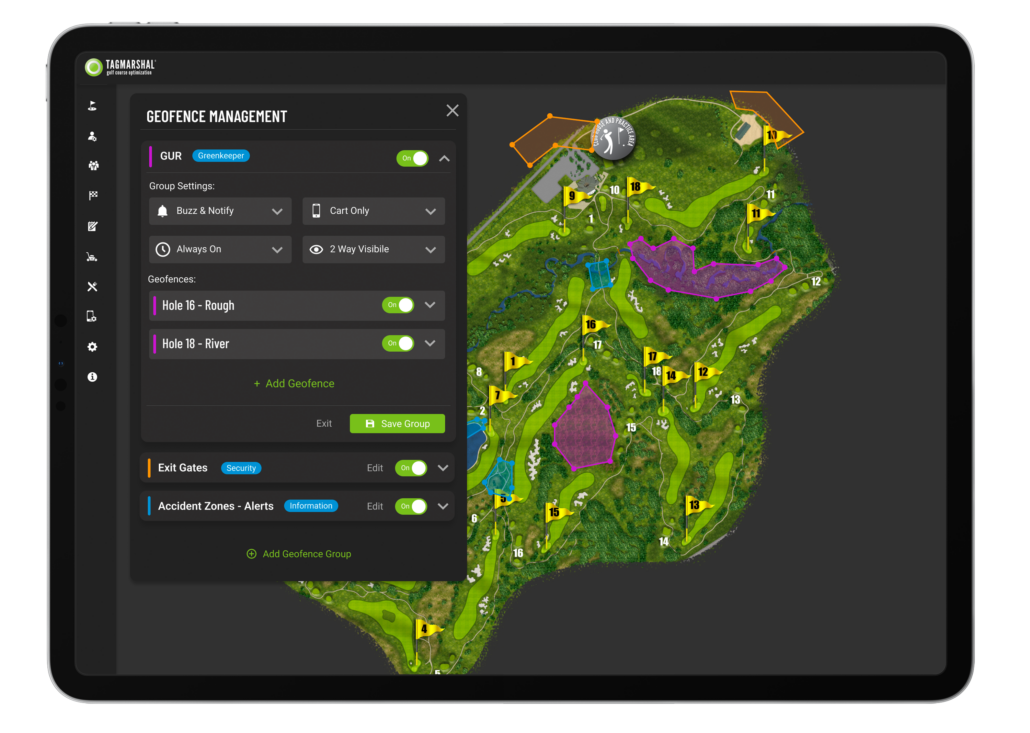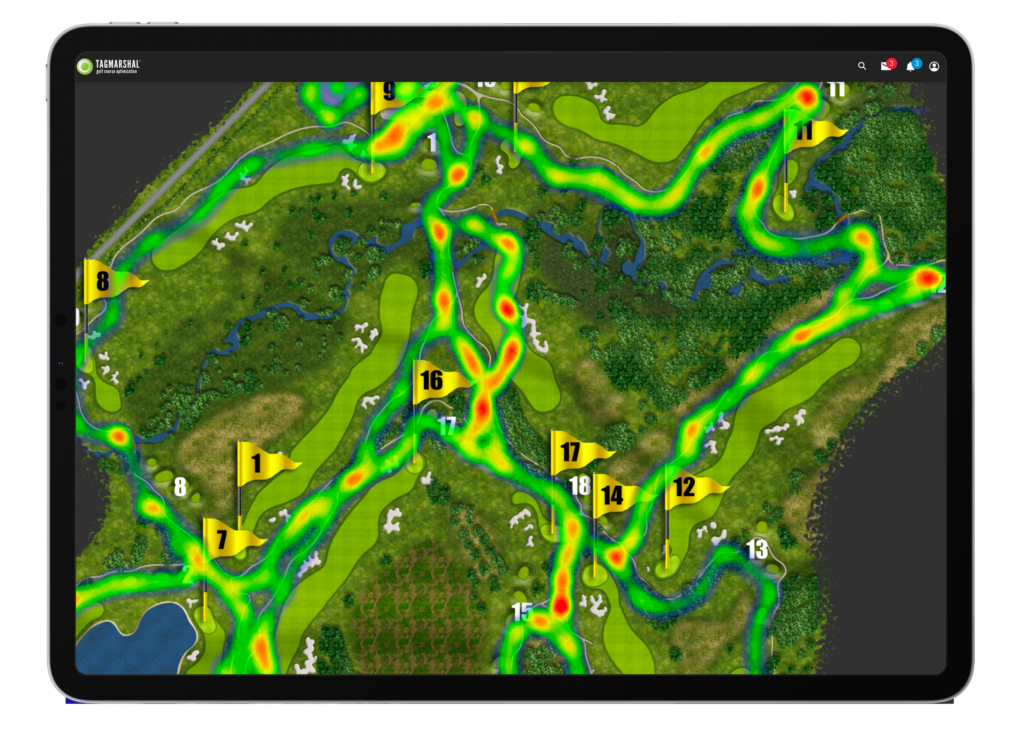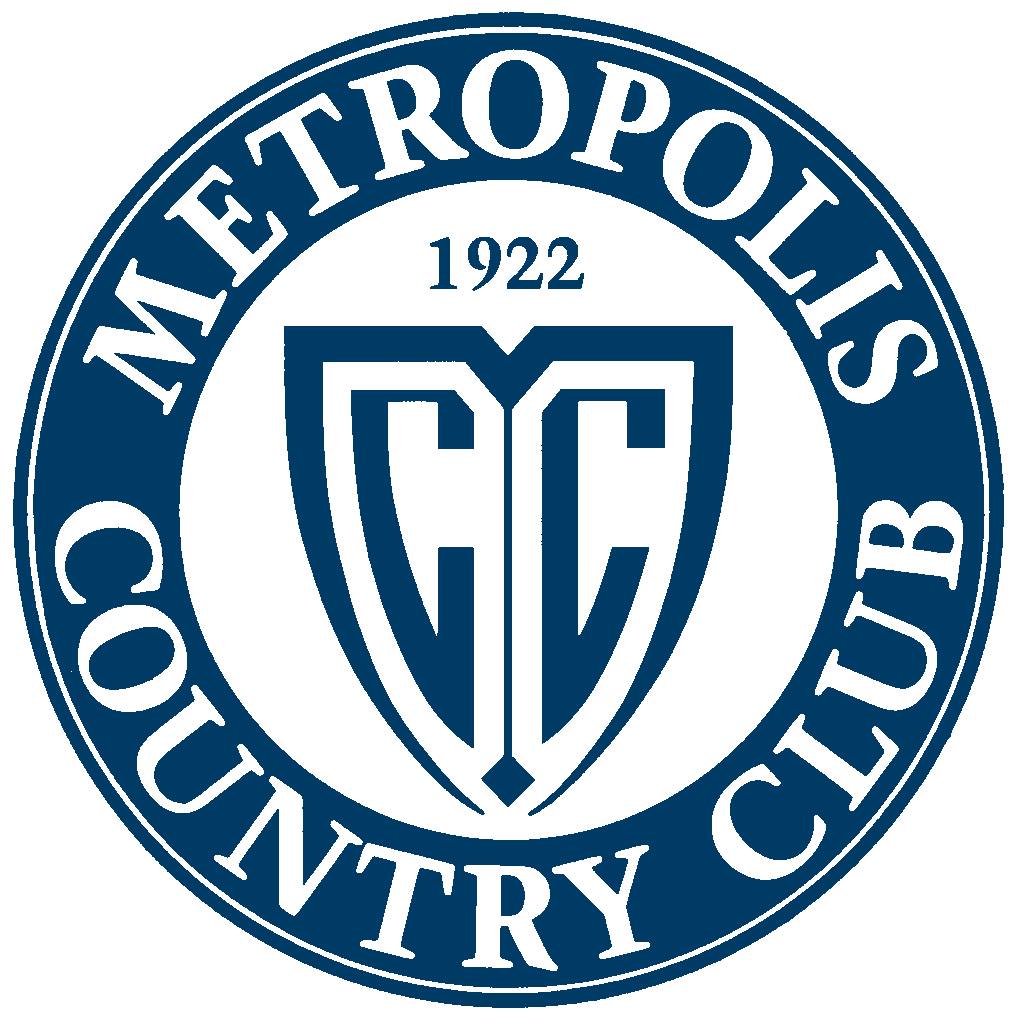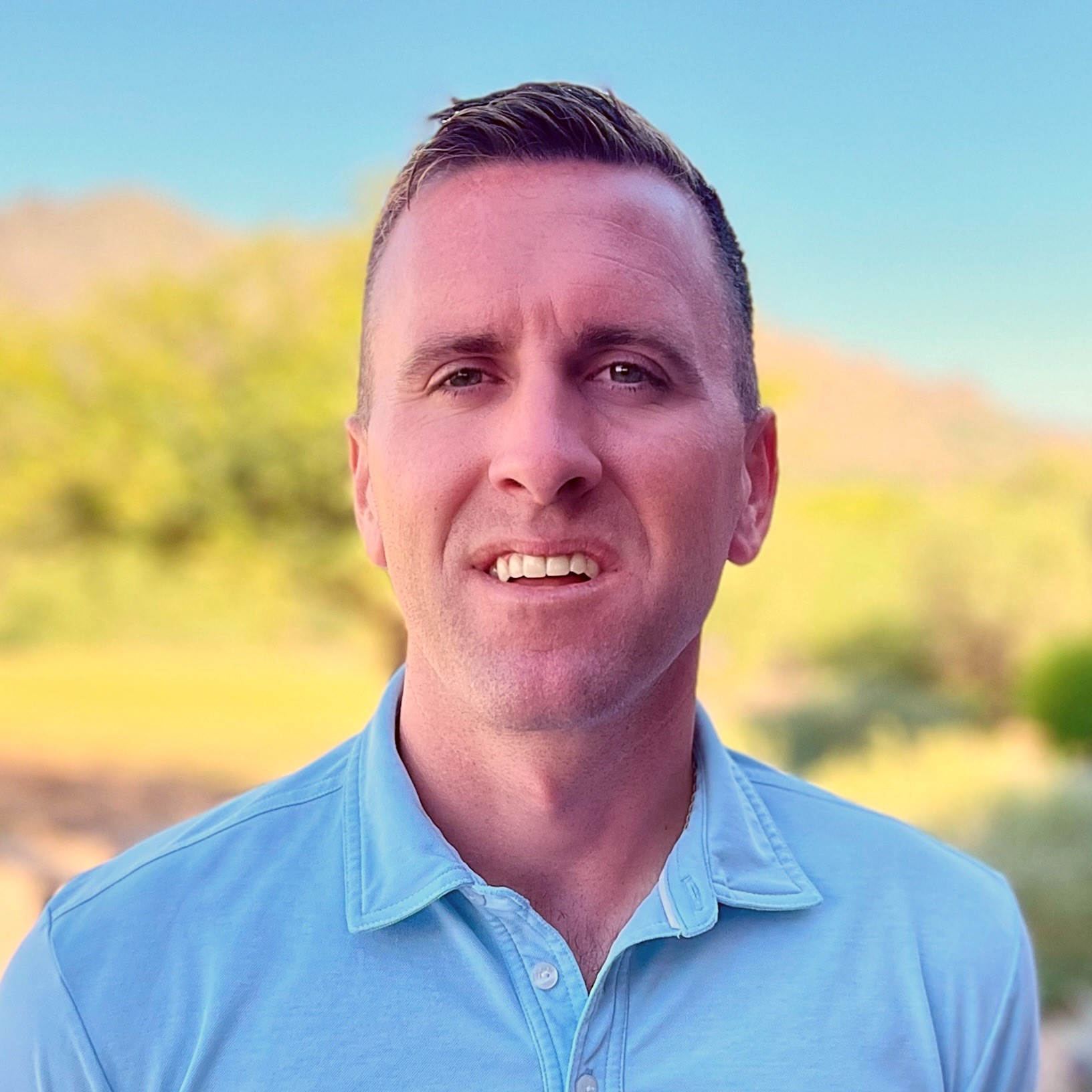4 Ways Golf Cart Tracking And Golf Cart GPS Will Help Your Course Improve The Player Experience
Thanks to a high volume of rounds in December, 2023 was a record-setting year for golf.
More than 531 million rounds were played at US courses last year, according to National Golf Foundation (NGF) information, which narrowly beat the previous record by a third of a percent.
Clearly, the sport is in a healthy position and participation has never been higher. Over 26 million Americans now play on-course golf recreationally, while off-course participation (defined as real club, real ball, full-swing driving range or simulator-related) has risen to 32.9 million.
This increase in on-course golf is happening against a backdrop where labor issues remain the major factor impacting golf courses’ financial health, based on the 2024 Golf Business Pulse Report.
Drawing on in-depth interviews conducted with members of the National Golf Course Owners Association (NGCOA), the information gathered offers “a comprehensive and empirical survey of 242 facility owners and operators on emerging trends and critical issues for the year ahead.”
It’s now obvious, even to operators who were initially resistant, that offering an excellent player experience amidst these labor difficulties is made easier by the use of GPS tracker technology.
In particular, the use of GPS trackers to monitor golf cart tracking has become popular and the multitude of benefits technology offers is winning operators over.

“With Tagmarshal, we’re able to improve the way in which we manage activity on the course, directly impacting on the golfer’s experience.”



Of the top 7 factors that course owners see as vitally important to the player experience, Tagmarshal’s optimization system has a direct impact on 4 of them.
Below we will focus on 3 of those factors – course conditioning, cost and value, and pace of play – discussing how golf cart tracking technology and GPS help with each. We’ll also hear from course operators who have benefited from using Tagmarshal’s GPS golf tracker system.
1. Improving Golf Course Conditioning With Golf Cart Tracking
Course conditioning remains the top player experience factor, with 95% of NGCOA respondents listing it as critical in this regard, the same figure as last year.
Players want green, consistent turf conditions and a course that is well-maintained from fairways through to bunkers and greens. Doing so is expensive and expenditure on course conditioning is often the largest line item on the budget.

As a result, any savings in this area, whether that’s time or money, can really help a course operator’s bottom line, or allow them to redirect these funds towards other projects.
The first step to maintaining a high level of course conditioning is protecting sensitive areas from high amounts of golf cart traffic. Combining GPS golf cart tracking with the ability to draw virtual geofences has made this easier than ever, driving compliance from golfers who know their movements are being monitored by a GPS tracker on the vehicle.

“The geofencing is really outstanding and very user-friendly and effective. Once the alert pops up and the beeping starts in the golf carts, our guests understand and can get back into a designated area.”



What sets Tagmarshal apart from many other golf cart tech solutions offering GPS tracking is that the system does not hard-stop golf carts via a kill switch. This is a deliberate decision made to reduce the post-round complaints and negative sentiment that many golfers feel towards having their golf cart hard-stopped.
Instead, players receive alerts when they have breached a geofence, ranging from messages via the 2Way golf cart screens to a loud beeping noise that only ceases when the GPS shows they have returned to a designated area.
You can also set up a number of different geofence borders, tailored to specific weather conditions or tournament play, and toggle between them.
The golf cart GPS data recorded by the tracking devices is accessible post-round via the Track Map, linked to individual player names, to inform any discussions that may need to be had with players in this regard.

“The geofencing works phenomenally and we really like that Tagmarshal’s system doesn’t shut the golf carts down, which is a much more effective way of doing things.”



For superintendents, using the Live Map to monitor exactly where the first group on the course is in real-time is invaluable information. They can now identify gaps in the field so their team can carry out work during the day without impacting the player experience, rather than after hours.
On top of rising labor costs, the cost of irrigation and fertilizer has increased sharply in the past few years. Understanding which areas of your course receive the most golf cart traffic, and which are left relatively unscathed, can result in serious cost savings.
Using GPS data from golf cart tracking, Tagmarshal’s Heatmap Visualization tool overlays usage heatmaps from players (and staff, should you choose) to highlight high and low traffic areas. Based on this data, you can identify areas to focus maintenance efforts and cut irrigation and fertilizer costs. Doing so means you’re operating in a more sustainable manner, which is especially important for courses out West where water management remains an issue.
Being able to monitor maintenance machinery at any time means you can be more targeted with how you use your vehicle fleet, further reducing the costs associated with upkeep. The tracking provides superintendents with a detailed, aerial view of the mow patterns currently in place.

Finally, golf cart tracking technology has allowed a course like Baltusrol to determine how much or what parts of the course can be turned back to natural areas. There have already been several cases where an architect, during a redesign, has spotted ways to save considerable costs by making this conversion.

“There’s nothing better than walking into the office and knowing exactly what’s happening on your golf course. It’s fantastic knowledge and peace of mind.”



2. How Golf Cart Tracking Helps Offer Improved Value
80% of NGCOA respondents listed ‘cost / value’ as being a key factor for golfers, up from 72% last year.
This reflects the respondents’ general concerns about the nation’s economy and how that will impact spending at their facilities.
While cost and value are closely related, they can be approached from slightly different angles. Firstly, let’s look at how golf cart tracking using GPS devices can help keep the cost of a round stable.
Keeping The Cost Of A Golf Round Stable Using A Cart GPS Tracker
Inflationary pressures, on top of the rising cost of labor, have meant that many courses need to increase revenue generation.
The obvious thing here would be to raise the cost of each round by a few dollars, but using the GPS data gathered via golf cart tracking opens up a number of options that don’t immediately impact a customer’s pocket.
Firstly, the proactive pace management enabled by Tagmarshal’s golf cart technology leads to a reduction in average round times. This, in turn, presents an opportunity to optimize your tee sheet.
As round times reduce, it may be possible to reduce your gap intervals without adversely affecting the player experience.
If you can get more players through the course each day, you’ll see a substantial revenue increase without needing to increase the fixed cost of a round.

“Our improved pace means we have added extra tee times throughout the day, and using the data we are looking at shortening intervals to get a few more in.”



Using automation to adjust the cost of a round in real-time, dynamic pricing is based on shifting supply and demand and has become increasingly popular. This is different to variable pricing, which is when the price of a specific tee time is based on the day of the week or time of day and remains static unless manually adjusted.
With dynamic pricing, players who are price-conscious, with flexible schedules, can find cheaper rounds during off-peak periods. These tee times may otherwise have gone unused.

In-demand rounds see a price increase to offset those costs. With golfers likely to book in advance in order to avoid surges, courses fill their tee sheets ahead of time.
Dynamic pricing is only truly effective as a strategy, however, when a course can guarantee a steady course flow and reliable pace of play. Tagmarshal’s golf cart tracking and GPS tracker technology not only assists in monitoring pace and flow of play in real-time, but also gathers information and data sets that will help you better understand your average round times and pace distribution.

“Between implementing dynamic pricing and bringing in Tagmarshal to improve pace of play – cutting nearly an hour off the average round time – Fieldstone is able to get more golfers on the course at pricing that better serves the bottom line.”



By optimizing tee sheet capacity to get more golfers onto the course, you also increase ancillary spending. At a resort course, for example, more tee times means golfers potentially staying and eating on the premises, making use of facilities like spas, and spending more money at the clubhouse and pro shop.
With this additional income, the need to raise the cost of a round can potentially be mitigated.
Ensuring Golfers See Value In Your Pricing
Courses using GPS tracking and golf cart tracking may want to offset this cost by increasing the price of a round.
To quote Warren Buffett, “Price is what you pay and value is what you get.” If the quality of the player experience also increases, then many golfers don’t mind paying a slightly higher price.
A recent USGA survey found that 74% of golfers believe pace of play is critical to the enjoyment of their rounds, so proactive pace management is crucial to the value proposition.

“Using Tagmarshal’s Analytics has made us much more effective at making player experiences better and improving loyalty. The value of a player enjoying a 4.05h round? It allows you to increase your fees.”




Golfers won’t necessarily notice a GPS tracker on a golf cart or vehicle, but they will notice Tagmarshal’s 2Way golf cart screens. With to-the-pin yardage, easy player navigation via a touchscreen and the ability to self-manage pace with a pace tracker, the golfer benefit is immediate.
In addition, there’s instant 2Way communication with the clubhouse and players can order food and beverages directly from the golf cart, prompted via GPS as they near the halfway house, increasing efficiency and reducing turn times at the halfway house.

“Tagmarshal’s technology is something that stares you in the face every time you get in the golf cart and people instantly have the impression that their round is worth what they’re paying.”



At private courses, members use the golf cart GPS system repeatedly. When the average round time on the course reduces, and a larger percentage of their rounds are finishing on or below the goal time, it’s easy to see a return on their membership fees.
With a substantial upfront cost and ongoing annual payments, understanding the value that GPS golf cart tracking offers is crucial to getting your members on board.

“I have not had a single member complain about the system. It’s very evident even two holes in why we got Tagmarshal and how it benefits our members.”



Once you have that buy-in, it’s so much easier to enforce pace of play policies. You also begin to create a club culture where getting around the course in the desired time is seen as respectful to your fellow members.
Tagmarshal partners often send monthly updates or reports based on Tagmarshal’s golf cart GPS tracker data to their members, showing them their own average round times, or have face-to-face conversations that are based solely on facts, making them easier to initiate and more informative.

“The fact that a member comes into my office after a round and is excited about their improved pace means it’s front of mind and a club culture is built.”



3. Monitoring Your Pace of Play and Course Flow Via Golf Cart Tracking
Pace of play remains a crucial component of the golf experience.
Along with the USGA research cited above, the NGCOA’s information showed that 76% of golf course owners and operators see pace of play as a critical factor in a golfer enjoying their round. This is down slightly from the previous year’s report but once again drives home its importance.
With the continued growth of off-course golf, which embraces the use of technology and often incorporates some degree of gamification, a new generation of golfers is increasingly used to the idea of the sport involving devices, GPS tracking and the like.
Using GPS Tracking Devices To Better Manage Pace
Courses often say they don’t have a pace of play problem. However, that is missing the point because by turning pace of play into an asset, courses can set themselves apart.
Using golf cart tracking and GPS tracker data, Tagmarshal’s system gives you a real-time, birds-eye view of where each playing group and golf cart is on the course via the Live Map. Powerful algorithms, based on GPS data gathered from more than 50 million rounds across more than 500 partner courses around the world, then identify potential pace of play issues.
Course management and their teams are able to view this Live Map, with color coding highlighting which groups are affecting on-course pace and flow, via desktop, mobile, or tablet. This monitoring can be done on the go in golf carts and player assistants sent directly to groups to deal with issues timeously.
Ensuring each group tees off on time is vital to pace of play. With a late start, a playing group is immediately at a disadvantage as that time will need to be made up during the course of the round. Tagmarshal’s GPS system automatically logs the time a group or golf cart enters the first tee zone, making it easier for management to track and measure starter accuracy.
In order to drive improvement, this can be measured across weeks or months, with reporting built into your team’s KPIs.


“Our pace of play has definitely improved, the concrete GPS data is fantastic and makes our lives easier, and it’s also been easy for us to implement. Even just handing out the Tagmarshal tracking tags, players know they’re on the clock and that already helps the pace of play.”



As golfers move around the course and are tracked by GPS tracker devices, their pace against the desired goal time is measured, as well as any geofence breaches. Your team can also log any interactions they have with groups.
This is recorded in the Track Map feature to aid with post-round conversations. If a player comes in unhappy about a 5-hour round, you can pull up a full record of their round. This helps to reframe the conversation, as it’s based on GPS data rather than perception.

All of the data gathered by Tagmarshal’s golf cart tracking system really comes together in the best-in-class Analytics Hub. Presented in a visually appealing and insightful way, you’re now able to spot trends and unique data insights that aid with better decision-making and highlight areas where you can potentially improve.
The software has recently undergone an extensive upgrade, meaning it’s easier for each team member to find the information most relevant to their roles.

“For continuous improvement, we need to have data. From a pace of play standpoint, that’s where Tagmarshal really helps us out with the ability to track and manage, based on real-time and historical GPS data.”



Understanding Course Flow Using Golf Cart GPS Devices
You can’t improve your course’s pace without understanding the flow of players across the course.
Having full line of sight of groups moving around your course based on GPS tracker data from tracking devices is great, but you might not fully grasp the gaps between groups and where bunching is likely to take place.
The Gap Time Monitor shows a visual representation of the distance, as well as the time, from one group to the next. This is represented by a linear display, starting from hole 1 through to hole 18, making it easier to visualize groups that are at risk of falling out of position.
At courses where additional tee times have been added, monitoring course flow via the Gap Time Monitor is particularly important. If gap intervals are too tight, bottlenecks are likely to form, which impacts both course flow and pace of play.

With Tagmarshal, golf cart tracking data from your vehicle GPS devices means that you can now measure and track how effective different gap intervals are over time. Use that data to find the optimal interval for your course, down to specific times of the day and days of the week.
Using the opportunity to build out extensive player profiles, especially at private clubs, means that you can assign tee times based on your members’ pace of play history. For example, a member shown to consistently play quicker by the GPS tracker is better suited to a morning tee time, whereas someone who plays slower will have a smaller impact on course flow if they tee off later in the day.

“From the data, we know who our slower and quicker members are and we set the tee sheet up accordingly, which helps us a lot with course flow.”



The GPS data gleaned from tracking will also identify areas where setup tweaks could improve course flow. If bottlenecks are often occurring around a specific hole, it may be that one of the preceding holes is playing a little harder than it should.
Based on the golf cart GPS data, which tracks the amount of time each hole takes, you may consider a simpler pin placement, especially on days when you know your course is busier, to prevent bottlenecks from occurring soon afterward.

“The technology gives us awesome data points to see who is being delayed and who is a delayer, and we will use that information to manage course flow.”



Final Thoughts On Golf Cart Tracking And GPS
Whether your course is on board or not, golf cart tracking technology continues to shape how courses are being run so that they perform optimally.
With so many GPS tracker solutions for a vehicle out there, covering various aspects of course management, it’s more important than ever that these solutions work together for maximum impact.
More than 60% of course owners and operators agreed that there is a need for greater integration between tech solutions in golf facility management.
Tagmarshal has a proven record of integrating with technology solutions that benefit clubs and players, including more than 25 top tee sheet providers, Golf Genius and more.
Thanks to this, it now operates as a central hub through which clubs have access to and derive benefits from multiple systems and their collective data insights.
Through the effective utilization of golf cart tracking and GPS technology, and the data gathered by Tagmarshal’s system, your course will be able to improve the player experience in quantifiable, tangible ways.
In doing so, you will be able to capitalize on the continued growth of the game and ensure that your operation remains in good health going forward.
Visit Tagmarshal’s website at tagmarshal.com to learn more.

 WATCH DEMO
WATCH DEMO